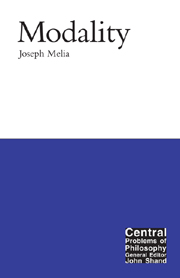2 - Modal language and modal logic
Summary
In this chapter we meet the modal languages and modal logics that philosophers and logicians use to formalize modal thought and talk. In order to understand the significance of the model theory for modal languages, we shall also examine model theory for non-modal first-order language. Finally, we'll see that there are limitations to the expressive resources of these modal systems: certain natural modal theses cannot be expressed in straightforward modal languages – although they can be expressed in a first-order language that quantifies over worlds and possibilia. This will be the first sign of support for possible worlds theory.
Quantified modal language
Some philosophers think that any fact can be captured in a language containing only names and predicates. Others argue that there are some true thoughts whose correct expression involves quantification over things – and only things: the first-order predicate calculus is the correct logical framework. Still others believe that, since first-order formulations of mathematical theories such as arithmetic and set theory have clearly non-standard models, second-order logic is required. And yet others maintain that none of these languages is capable of expressing modal facts.
First- and second-order languages have been extensively studied by logicians. These languages can be presented in formal systems whose grammatical and syntactical rules are precisely defined. Deductive systems for these logics have also been studied and there exist precisely defined semantic systems for these logics. Students and researchers alike are well trained at translating English sentences into first-order languages, and sentences of first-order languages into English.
- Type
- Chapter
- Information
- Modality , pp. 21 - 62Publisher: Acumen PublishingPrint publication year: 2003

